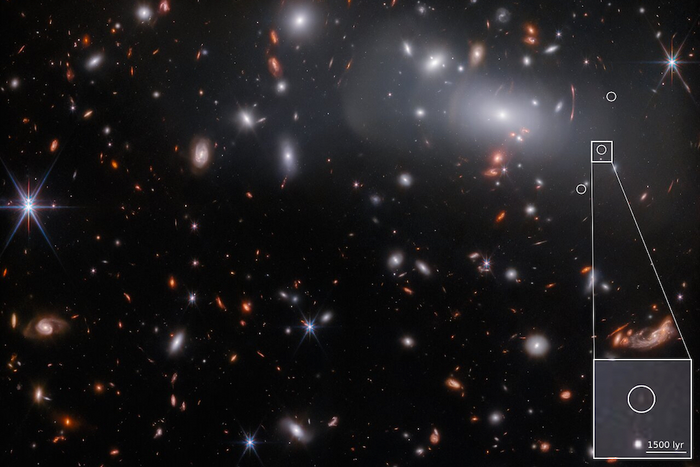NASA's James Webb Space Telescope has discovered a tiny galaxy that is generating new stars at an extremely high rate for its size, as per a press release.
This unique discovery was made using first-of-their-kind observations from the telescope, and the galaxy is one of the smallest ever discovered at a distance of more than 13 billion years after the Big Bang.
The discovery may enable scientists to have a better understanding of galaxies that existed soon after the Universe's creation.

Webb Sees a Far-off Tiny Galaxy
The University of Minnesota Twin Cities was home to the team that made the discovery. They were among the first teams to use the James Webb Space Telescope to examine a far-off galaxy, and their findings are anticipated to be among the very first to be made public.
Webb is the only one that can even remotely approach this galaxy, according to Patrick Kelly, the paper's senior author and an assistant professor at the University of Minnesota School of Physics and Astronomy.
The research team was able to discover and examine this brand-new, small galaxy thanks to gravitational lensing, where the mass in a galaxy or galaxy cluster magnifies light.
This faint background galaxy was magnified by a galaxy cluster, making it appear 20 times brighter than it would have otherwise.
The scientists then utilized spectroscopy to determine the galaxy's distance as well as some of its chemical and physical characteristics.
Scientists can get closer to resolving a major astronomical mystery involving how the Universe became reionized by examining galaxies that were present when the Universe was thus much younger.
Read Also : NASA's James Webb Space Telescope Catches an 'Asteroid Photobomber' Roughly the Size of Rome's Colosseum
Glimpse into the Universe's Infancy
According to Hayley Williams, the first author of the paper and a Ph.D. student at the Minnesota Institute for Astrophysics, "The galaxies that existed when the Universe was in its infancy are very different from what we see in the nearby Universe now.
"This discovery can help us learn more about the characteristics of those first galaxies, how they differ from nearby galaxies, and how the earlier galaxies formed," Williams added.
The James Webb telescope is substantially more sensitive at redder, longer infrared wavelengths and can gather nearly ten times as much light as the Hubble Space Telescope.
This gives researchers access to a brand-new window of data that might result in a treasure trove of astronomical discoveries.
Williams notes that Webb has the extraordinary ability to peer extraordinarily deep into the Universe, which is essentially receiving a snapshot of our Universe in the first 500 million years of its existence.
The discovery of this teeny tiny galaxy was published in the journal Science.
Related Article : NASA's James Webb Space Telescope Captures the Sharpest, Most Detailed Image of the Orion Nebula





